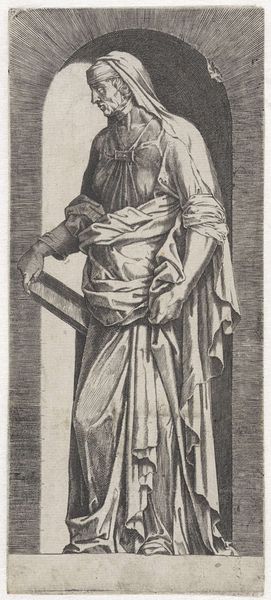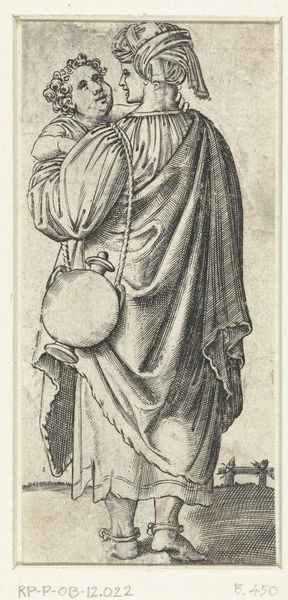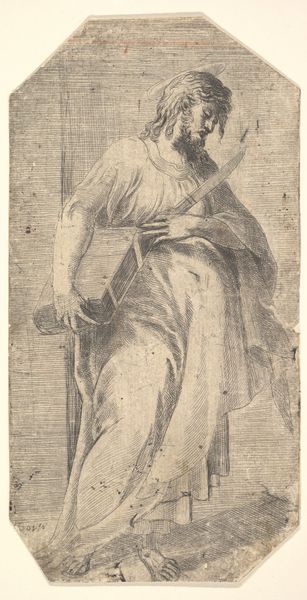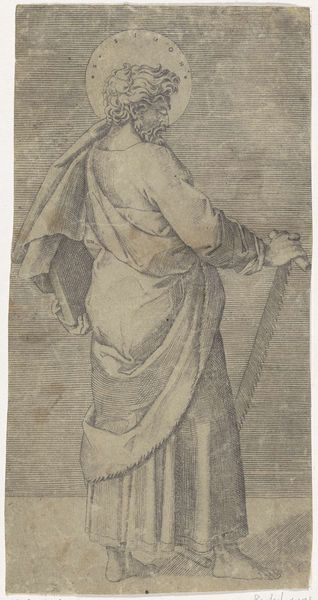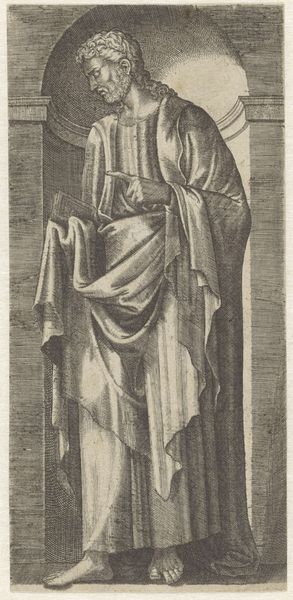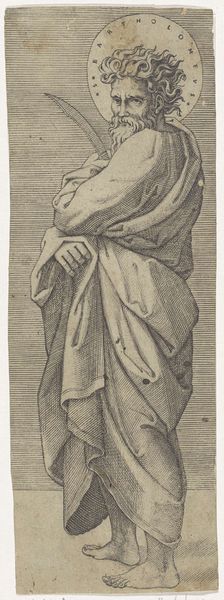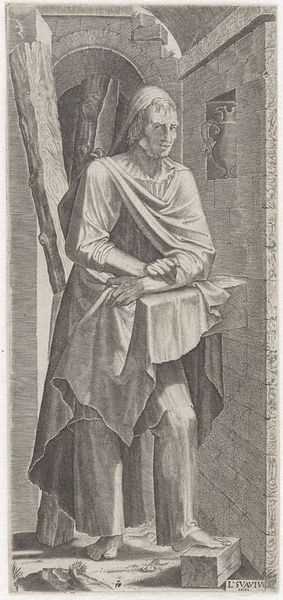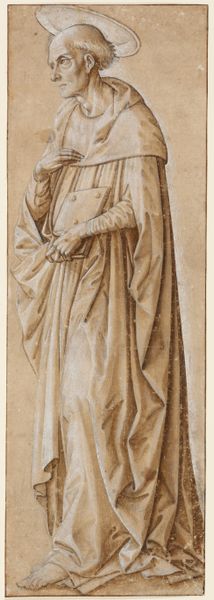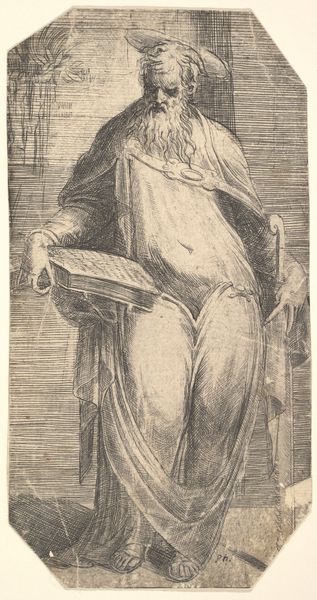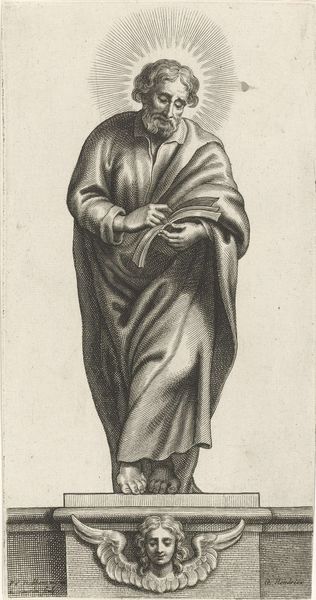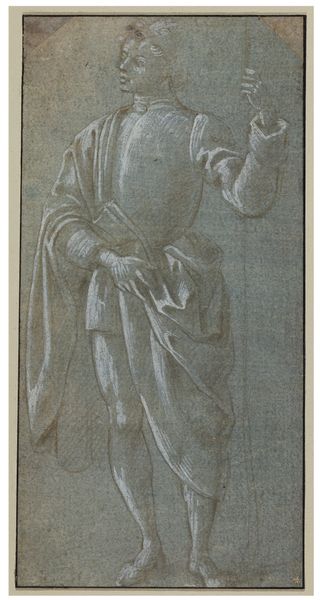
print, engraving
#
portrait
# print
#
figuration
#
history-painting
#
italian-renaissance
#
engraving
Dimensions: height 204 mm, width 97 mm
Copyright: Rijks Museum: Open Domain
Editor: So, this engraving, "Paulus met zwaard" by Marcantonio Raimondi, dates back to between 1517 and 1527. I'm immediately struck by the intensity of his gaze and the prominence of the sword. It feels almost confrontational, a little imposing even. How do you interpret this work, seeing as it was produced during the Italian Renaissance? Curator: The imposing nature isn't accidental. The sword, coupled with Paul’s unwavering gaze, frames him not just as a religious figure but as a figure of power. What sociopolitical implications does it hold to represent a religious leader as a strong, almost militaristic, figure? What sort of impact might it have on the working classes to envision religious authority represented in such a potent manner? Editor: That's a great point. It shifts the reading from purely spiritual to something more complex. It's like he's not just preaching the word, but enforcing it. Curator: Exactly. Consider the Reformation brewing during that period. Representing Paul in this manner serves specific agendas. Was it trying to establish Catholic doctrine? The print becomes a visual tool in a power struggle. The act of engraving itself becomes an important factor in art production at this time. Who was Raimondi addressing? Which publics? These were political actors in the development and the establishment of particular values. Editor: So it’s not just about the image itself, but about how it functions within the context of religious and political upheaval? Curator: Precisely. The symbolism gains a whole new weight. And consider Paul’s pose—is it about resolute faith, or is there a certain performance of masculinity interwoven with the religious statement? Who is able to embody the idea of righteousness, and to what purpose? It prompts important discussion. Editor: I hadn't considered the masculinity angle before, but it completely changes how I see the work. Thanks for the insight! Curator: And thank you for noticing how impactful this representation can be, centuries after its creation. By considering power structures at the time it was created and still, implicitly, at work today, you shed more light on it, centuries later.
Comments
No comments
Be the first to comment and join the conversation on the ultimate creative platform.
